
views
Treating Your Shoulder at Home
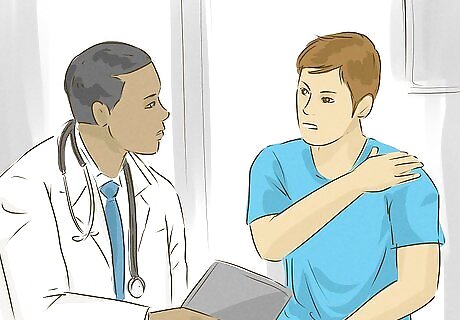
Make a doctor's appointment. Rotator cuff tears should always be seen by a doctor first. How you treat your shoulder will depend on the severity of the injury. Make an appointment with your doctor the moment you suspect injury or notice chronic pain in your shoulder area. Your doctor can assess the level of the tear, and let you know if conservative treatments such as rest and physical therapy will be enough to restore normal mobility. Severe or complete tears often require surgery or steroid treatment. Your doctor may use x-rays and other tests to see if surgery or other medical treatments will be necessary.
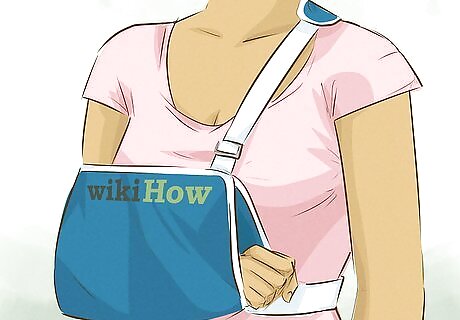
Rest your shoulder. While your tear is healing, rest your shoulder as much as possible. Avoid heavy lifting and rapidly extending your arm or raising it too high. Allow your arm to hang naturally, or use a sling if the weight of your arm is too much. Let your shoulder rest for as long as your doctor recommends before resuming regular physical activity. The length of recovery may depend on the severity of the injury. Start small once you resume normal physical activity. Talk to your doctor or physical therapist about appropriate activities as you heal.

Ice your shoulder for 15-20 minutes to control your pain. Use a commercial ice pack or a zipper lock bag filled with ice cubes. Wrap your ice pack in a clean cloth or rag, and hold it over your rotator cuff for 15-20 minutes to help mitigate any pain and swelling that you may experience. Ice your shoulder as needed throughout the day to help manage pain and inflammation. Wait at least 30 minutes between icings to avoid complications due to the cold.

Use over-the-counter anti-inflammatory medications to manage pain. Take over-the-counter medications such as ibuprofen and naproxen to help manage pain and soreness while your shoulder heals. Use the medication as recommended by your doctor, or based on the dosage information on the packaging.
Seeking Medical Help

Attend physical therapy. Working with a trained physical therapist can help you regain strength and mobility in your shoulder. Physical therapy may be used as part of a conservative treatment plan, or as part of surgical aftercare. Ask your doctor or friends who have recovered from a similar injury for recommendations for a quality physical therapist in your area. In the US, you can check a potential physical therapist’s license online using links provided by the Federation of State Boards of Physical Therapy (FSBPT).
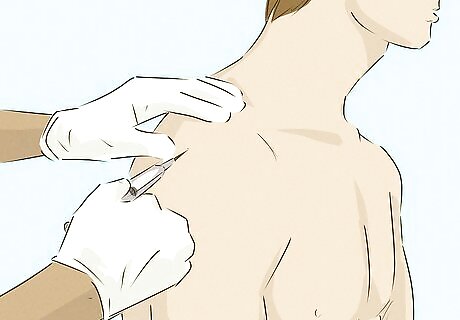
Ask your doctor about steroid injections. Cortisone injections can help with chronic inflammation, mobility, and pain reduction. Steroid injections aren’t effective for all patients, but can help some return to regular levels of mobility without surgery. Talk to your doctor to see if you are a strong candidate for cortisone injections. Cortisone injections will wear off over time. You may need additional injections in the future.
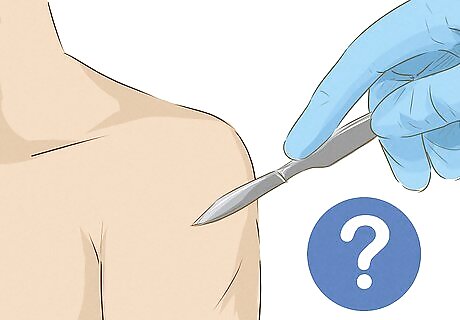
Talk to your doctor about rotator cuff surgery. If you have chronic pain or weakness that conservative treatment has failed to help, you may need to consider surgical treatment. Talk to your doctor to see if you meet the criteria for a surgical candidate. If so, they can recommend surgeon in your area, who will be able to help you choose the right surgical technique. Partial tears may only need arthroscopic surgery, which will use a small incision and a camera to guide the surgery, and a procedure called a débridement. Full tears generally require an open repair of the tendon or bone.
Working an Injured Shoulder
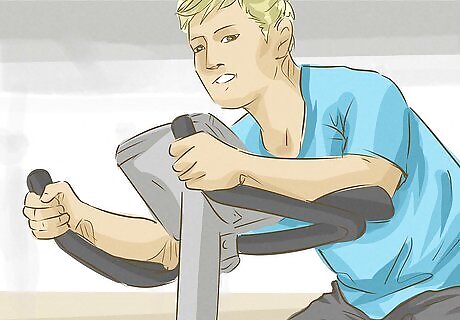
Warm up with low impact cardio activity before exercising. As you work to return shoulder mobility, take an extra 5-10 minutes to warm up before engaging in any major exercising. Low impact activities such as walking or riding a stationary bike are ideal. This will help gradually increase blood flow to the muscles and prevent further injuries.

Gently exercise your shoulder as it heals. As you feel able, start stretching and doing basic exercises to return strength and mobility to your shoulder. You may feel resistance when you first begin, but you should stop or reduce the difficulty of any activities that cause you pain. Some basic stretches and exercises include: Pendulum swings: Bend over at your hips and use your non-injured arm to support yourself on a table or chair. Allow your injured arm to hang down, and slowly perform easy movements in all directions for 1-2 minutes. Prone rowing: Lie on your stomach and bend your injured arm at the elbow. Squeeze your shoulder blade and lift your hand toward your armpit before returning to neutral. Repeat this for 10 repetitions. You can add a light hand weight for added resistance as you build strength. Shoulder blade pinching: Simply pinch your shoulder blades together and hold for 10 seconds. Do that 5-10 times.
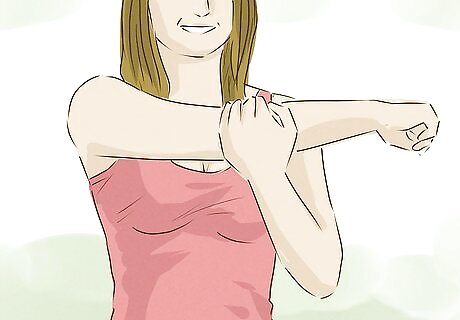
Stretch your shoulder on a regular basis. In addition to exercising your shoulder, it should be stretched daily to help maintain mobility as it heals. Stretches may be done during exercise sessions, or you may choose to do one or two stretches at different points throughout the day to help keep your shoulder limber. Some stretches may include: Flexion stretch: lie down on your back with your knees bent. Clasp your hands together and stretch your arms directly up then back over your head. Hold the stretch briefly before returning to neutral. Repeat this exercise 10 times. Posterior capsule stretch: Grab the elbow of your injured arm using your non-injured arm. Pull the elbow gently across the chest as far as possible. Hold for 10-30 seconds before letting go. Repeat this stretch at least 3 times. This will help stretch the back side of the shoulder.
Try isometric shoulder exercises. You can do these once your rotator cuff tear has gotten a little better and you can move it around a little bit. Bend your elbow at 90 degrees, make a fist, then push your fist into a wall through a pillow. You can also push your elbow backwards if you're standing with your back against the wall. If you're really feeling good, stand with side next to the wall. Then, angle your elbows at 90 degrees and push everything from your elbows to the back of your wrist into the wall. You can then switch and push the front of your wrist into the wall.
Preventing Future Injury

Talk to your physical therapist about strength training exercises. Your physical therapist can recommend the right exercises to help strengthen your shoulder as your shoulder continues to heal. They can help you figure out which exercises will meet your range of motion, as well as what level of weight to use.
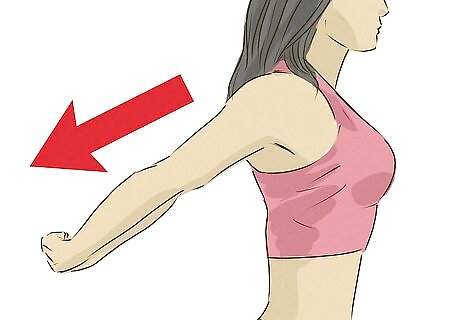
Stretch throughout the day even after your shoulder heals. If you’ve had a rotator cuff injury, performing your restorative stretches in small intervals throughout the day can help prevent further injury. Follow your physical therapist's instructions on how and when to do stretches. In addition to stretching throughout the day, you should stretch your shoulder and arms thoroughly before any planned exercise or physical activity.
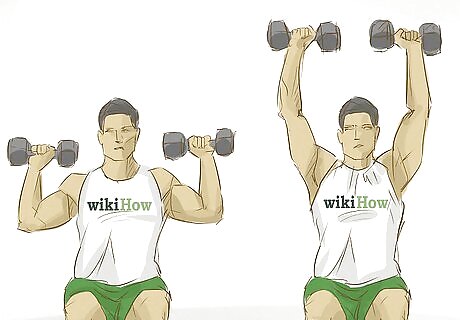
Strengthen your rotator cuff. Your physical therapist may recommend specific exercises to strengthen your rotator cuff. Continuing focused exercise to help restore shoulder strength can help keep away future injury. Make time every day to exercise your shoulder. At first, you may continue with your mobility exercises. However, as your doctor gives you permission, start adding strength training to your shoulder exercises. As your cuff begins to heal, start by adding small hand weights and exercise bands to increase resistance on your mobility exercises.
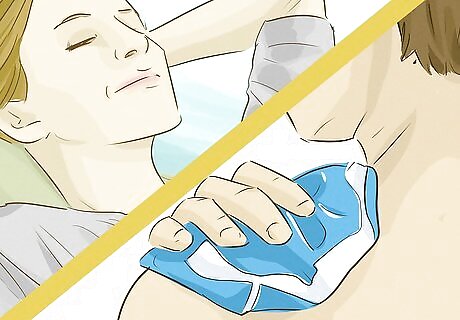
Rest your shoulder after exercise. Rotator cuff injuries may mean that you need to rest your arms more than you did previously. Immediately after exercise or physical activity, allow your shoulder time to rest. You may even opt to ice it to help prevent swelling. If you participate in heavy strength training, allow your muscles 1-2 days to recover before resuming heavy exertion.


















Comments
0 comment